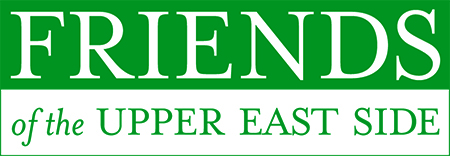
Image: Department of City Planning
Late Thursday evening, the City Council’s Zoning Subcommittee and Land Use Committee voted to approve the City of Yes for Housing Opportunity (COYHO) proposal, a key component of the Adams administration's "City of Yes" initiative aimed at overhauling New York City's zoning codes. This decision paves the way for a full City Council vote, anticipated in early December.
While the Council made several important revisions to the text, including some advocated for by FRIENDS and other NYC preservation groups, the amendments still fall short of ensuring that City of Yes creates truly affordable housing, while also protecting existing affordable housing, and preserving the contextual zoning that maintains the balance between old and new in high-density neighborhoods like the Upper East Side. Without stronger safeguards, these changes are likely to lead to increased luxury development, further displacing relatively affordable housing options.
Wins for Preservation and Public Oversight
Since the City of Yes initiative’s inception, FRIENDS has actively engaged in the review process, testifying at all public hearings, meeting with elected officials, and advocating for greater public oversight. Some of the amendments FRIENDS has championed are now included in the revised text:
- Landmark Transfer of Development Rights (TDRs):
The Council voted to continue requiring special permits for landmark TDR receiving sites where height increases exceed 25%. This preserves the public review process FRIENDS has long advocated for. However, we are disappointed that special permits were not retained for all bulk regulation waivers.
- Height and Bulk Adjustments:
City Council approved a reduction of 10 feet in proposed building heights for R8B (high-density, contextual zoning) districts on the Upper East Side. While this is a step in the right direction, it falls short of adequately protecting neighborhood character and contextual development. FRIENDS continues to urge maintaining the current 75-foot height limit or increasing it modestly to 85 feet, aligned with affordable housing FAR bonuses.
- Modifications to Residential Zoning Standards:
Adjustments were made to protect open space, including prohibiting rear yard additions in historic districts and row houses. Additionally, the 30-foot rear yard size requirement was retained for narrow, attached buildings—an essential step in safeguarding the light, air, and green spaces of high-density neighborhoods like the Upper East Side.
- Special Zoning Districts:
While the Madison Avenue Special Zoning District was not specifically addressed, the Council made changes to uphold the design intent of special zoning districts. In the case of the Madison Avenue Special District, this includes preserving regulations requiring buildings to taper above 170 feet, maintaining the unique character of the Madison Avenue corridor.
- Public Review Process:
Special permits (rather than "authorizations" from the City Planning Commission that are not subject to public review) were retained for irregular sites and for additional floor area for community facilities, ensuring that opportunities for public input and oversight remain intact.
Unresolved Concerns
Despite these improvements, FRIENDS remains deeply concerned about two key amendments that could enable taller, bulkier towers in areas like Yorkville, undermining affordability and neighborhood character:
- Modification of Tower-on-a-Base Bulk Regulations:
Raising the maximum base height for towers in R10-equivalent districts (along avenues) from 85 feet to 155 feet threatens to disrupt urban design principles and create monolithic, out-of-scale structures along avenues. FRIENDS continues to advocate for retaining the current 85-foot base height.
- Changes to Lots Split by Zoning District Boundaries:
Allowing floor area transfers from lower-density zones (e.g., midblocks) to higher-density zones (e.g., avenues) could enable developers to bypass affordable housing incentives. FRIENDS strongly recommends tying such transfers to affordable housing provisions to ensure these changes benefit the community.
What’s Next?
The City of Yes for Housing Opportunity proposal has the potential to reshape the fabric of neighborhoods across New York City, including the Upper East Side. While some progress has been made, significant gaps remain in protecting affordability, contextual zoning, and public oversight. FRIENDS will continue advocating for stronger measures as the proposal heads to the full City Council for a vote in early December.

